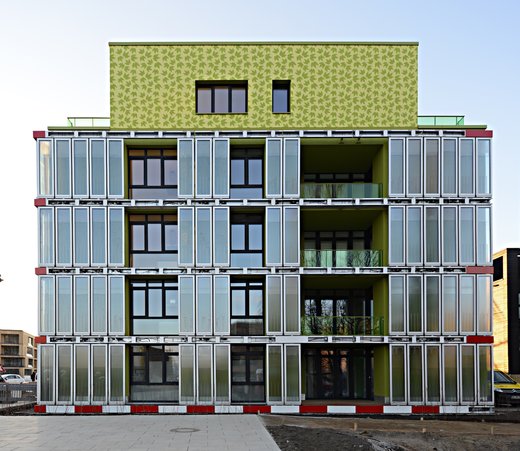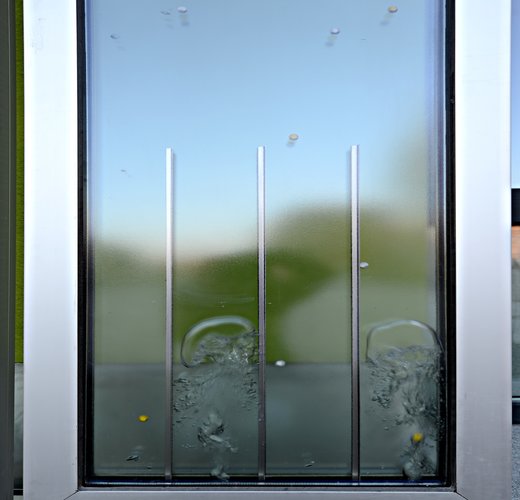A building that grows algae inside its fa̤ade to generate heat and biofuel, give shade and eat carbon Рall at once Рwill go live this month in Germany.
It’s often said that buildings in use account for something like 40% of a country’s CO2 emissions.
(See here for instance.)
If true, it means that just by being themselves buildings are among the main fossil-fuel-guzzling, greenhouse-gas-spewing culprits of climate change.
That’s why the world’s first algae-clad building, scheduled to go live this month in Germany, is causing such a stir.

The system works by hothousing algae in glass panels. (Credit: Arup/Colt International/SSC)
The BIQ House, showcased for the first time last month at the International Building Exhibition in Hamburg, generates heat and biofuel, gives shade, and eats CO2 – all at once.
The system works by hothousing algae in glass panels, called “bioreactors”.
Nutrient-rich water inside is fed with CO2, which, with sunlight thrown into the mix, allows the algae to fulfil its mission in life – galloping reproduction.
When enough has grown the thick pulpy matter is separated and diverted – “harvested” – to an external biogas plant to be converted to fuel, which the building can use.
The panels also capture solar heat to generate hot water.
And, in a flourish of nifty usefulness that only natural systems tend to provide, when the sun is strong the algae grows fast, providing shade to help cool the residential building.

Nutrients, water, CO2 and sunlight allow the algae to reproduce quickly. (Credit: Arup/Colt International/SSC)
In all, 129 bioreactors, measuring 2,500mm by 700mm, have been installed on the south-west and south-east faces of the four-storey building, giving around 225 sq m of helpfully slimy facade.
“Using bio-chemical processes in the façade of a building to create shade and energy is a really innovative concept,” said Jan Wurm, Europe research leader at Arup, which led the design. “It might well become a sustainable solution for energy production in urban areas, so it is great to see it being tested in a real-life scenario.”
The result of three years of research and development by Colt International, based on a bioreactor concept developed by SSC Ltd and design work led by Arup, the system will go into full operational mode on 25 April.
Funding support came from the German Government’s “ZukunftBau” research initiative.






